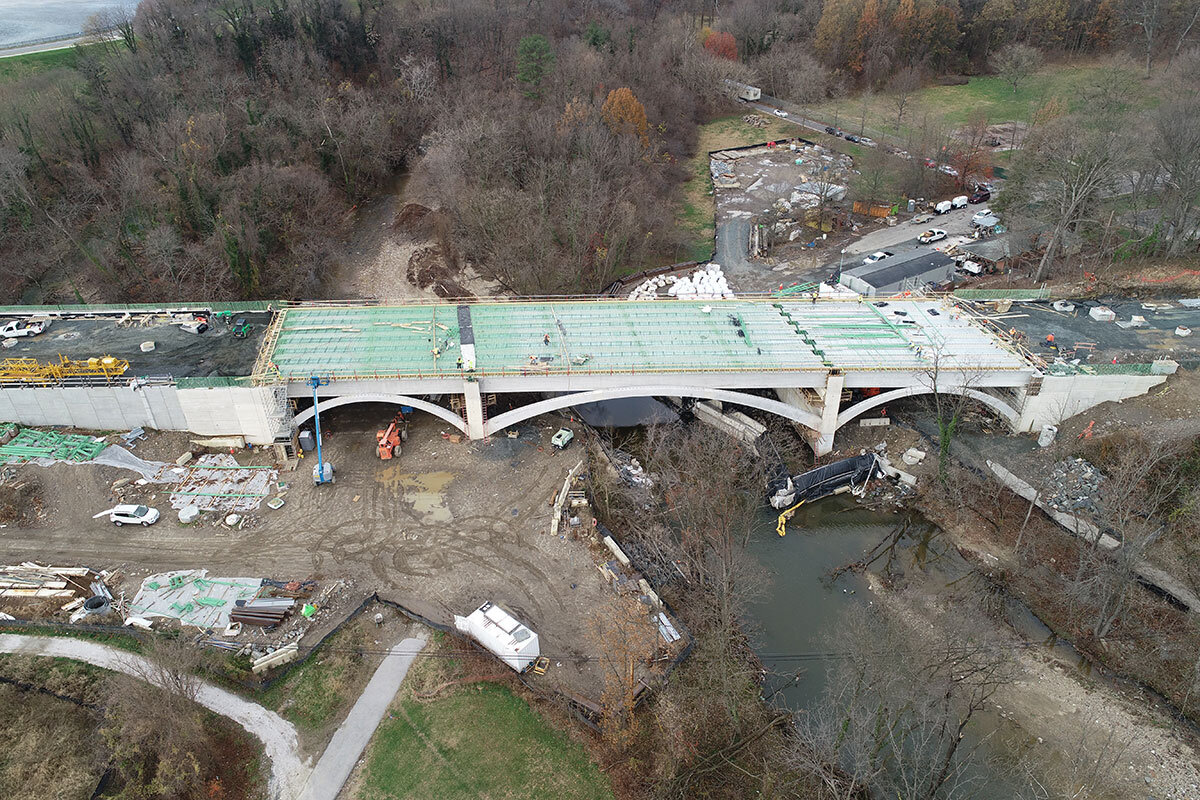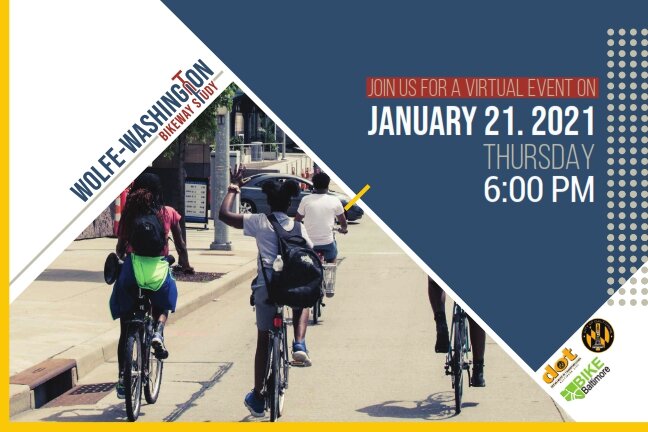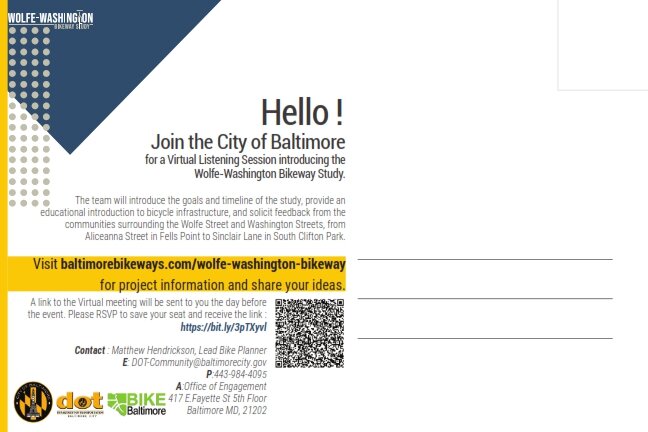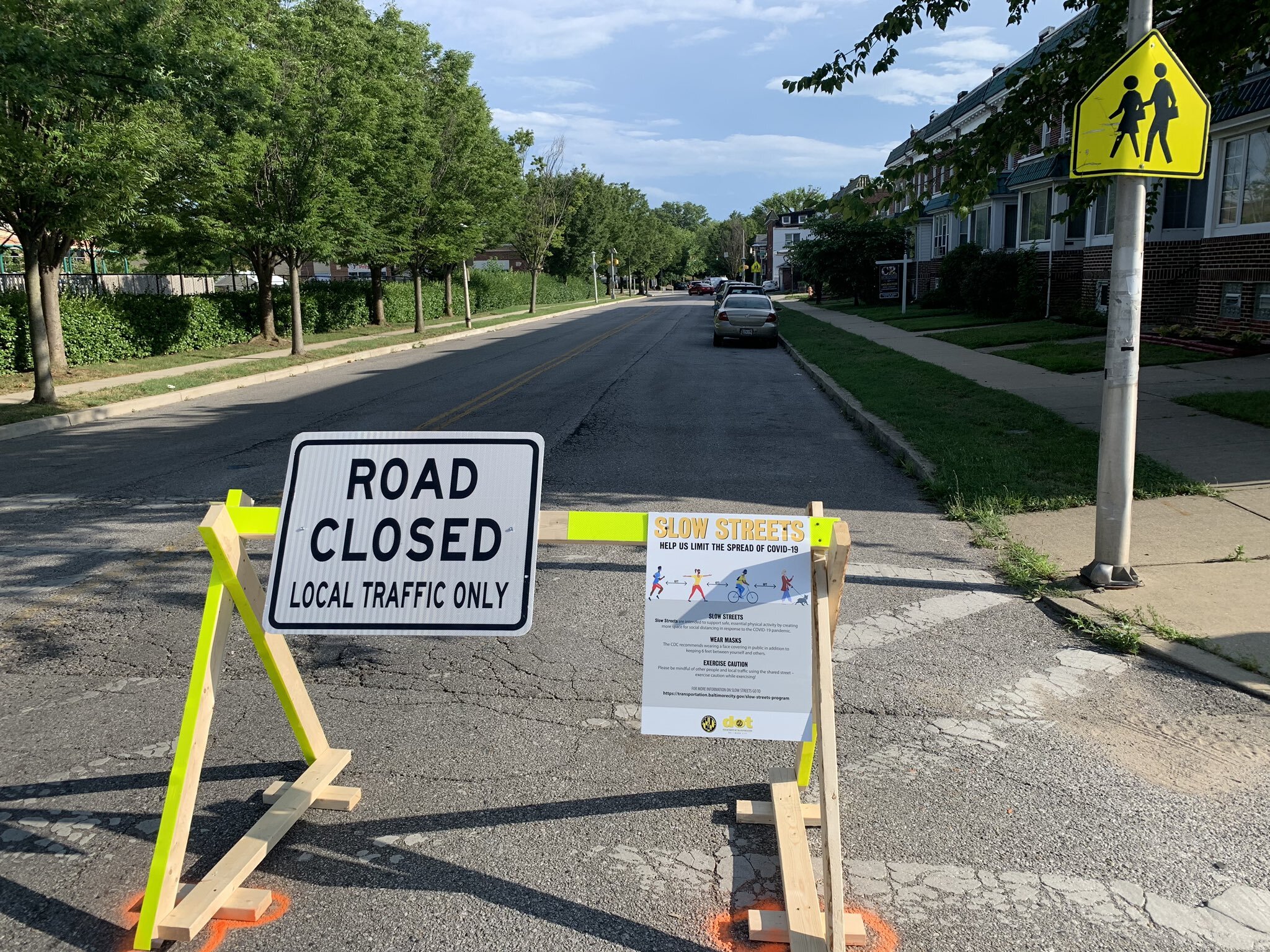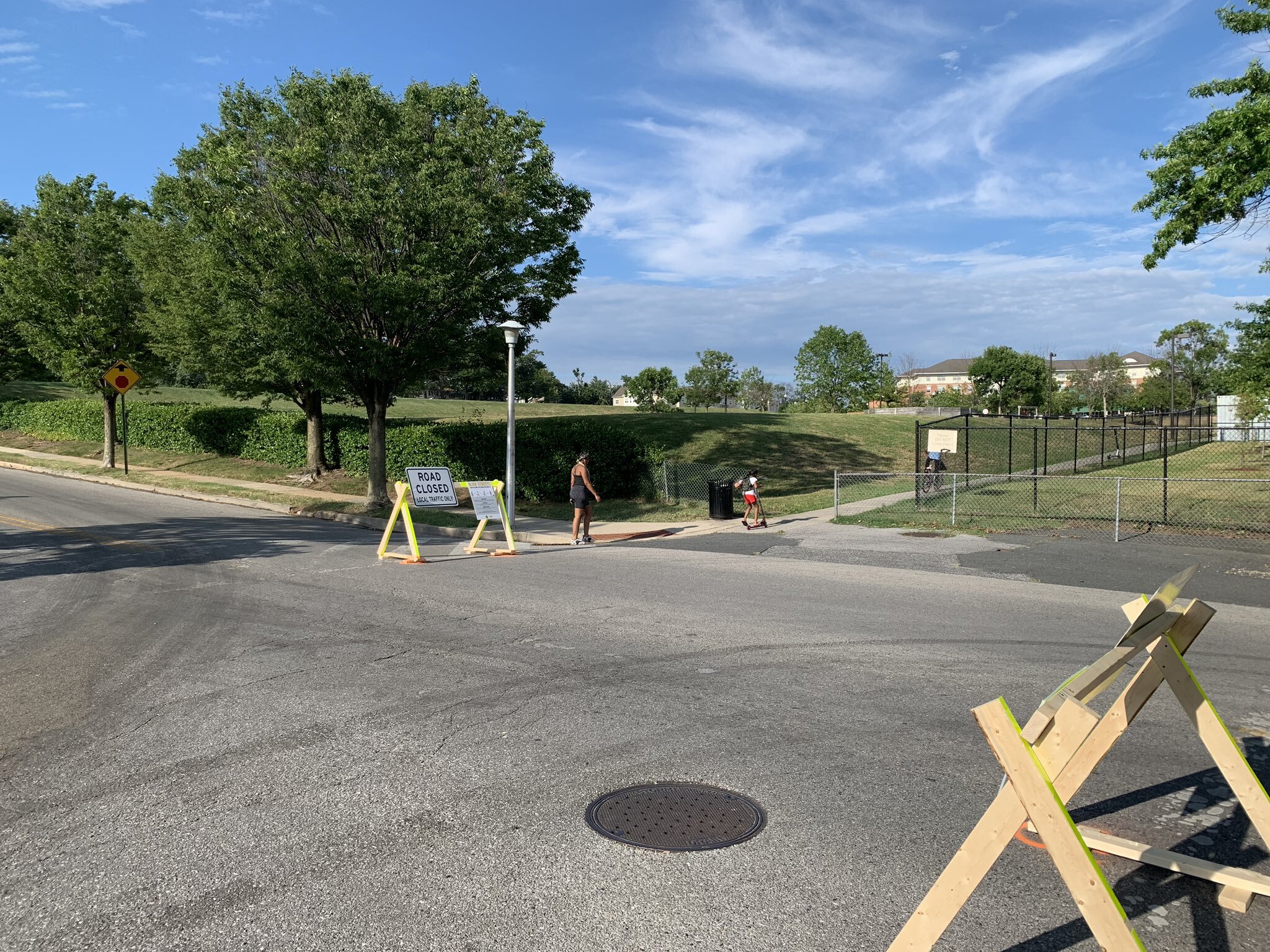This summer, in response to legislation introduced by Council President Scott and unanimously supported by Baltimore City Council, the Baltimore City Department of Transportation started its Slow Streets program. Yellow barriers began popping up around town discouraging through traffic and encouraging slower speeds on neighborhood streets. This concept is being implemented in cities across the country due to an ever increasing demand for public space. People are home more. Our usual gathering spaces have been limited. So what better way to increase places to be than activating the largest amount of public space the City of Baltimore owns--our streets?
The program has had its challenges, challenges that have been seen in implementations across the country. these interventions need to be paired with widespread public communication so people understand their purpose, and programmed in ways that invite people to see the streets as a new front yard.. Local neighborhood champions have also been critical to success, and it has been encouraging to see neighbors step up in their communities to steward the program.
For Bikemore, Slow Streets has helped us explain the benefits of calming traffic on neighborhood streets. Too often Complete Streets advocacy is full of jargon that is hard to relate to. No rendering or sketch can do as good a job explaining the benefits of traffic calming than when folks can stand outside of their house and experience it themselves. For that reason alone, the Department of Transportation should be commended for investing in this program.
This became evident last Saturday while spending time in Curtis Bay. South Baltimore is so often overlooked when it comes to investment. But the City Council and the Department of Transportation have been intentional to ensure each council district receives a Slow Street.
We were spending time with neighbors at the Filbert Street Garden, getting feedback on the Slow Street recently installed on Filbert Street and discussing future programming to activate the space. In between falling in love with Ed the Goat and Marshmallow the Chicken, and marveling at all the late summer crops that neighbors have nurtured, I walked across the street to meet a neighbor mowing her lawn.
Over the years she’s put a lot of effort into her home. Her lawn, flowers and trees are beautiful. She proudly displays a sign noting that she won second place this year in the Curtis Bay yard competition. As we stood there chatting, multiple cars drove through the intersection where the Slow Streets barriers had been placed. We noted how even while speeding to the intersection, each car had to stop and look carefully before going through the stop sign. We both sighed at how it both worked to slow down cars there, but did little to prevent speeding just a few car lengths up the road. We brainstormed different ideas about how it could be better. What struck me was that after asking a simple question, “What do you think of these barriers?” Her insight spoke directly to the purpose of the program. She noted how kids are out playing in the street more now that we are all at home. And that the barriers make it safer for them to be outside. And she said she wanted to see more traffic calming in her neighborhood.
Before the barriers I know that conversation would have gone differently. I would ask about traffic on someone’s street. They would agree that traffic could go slower. But it was hard for them to imagine interventions beyond speed humps--something that is costly and not always appropriate for the street. And too often that is where the conversation would end. Any other solution would inevitably be seen as intrusive and not something that the community requested. Not because they don’t want traffic to go slower, but because the community input process is designed to fail.
Citizens shouldn’t be responsible for dreaming up solutions to problems the City already knows how to fix. The City shouldn’t create impossible thresholds of community support before we try something new to make a street safer for people who walk, bike, and take transit. What the City can do is double down on what Slow Streets has demonstrated works really well. Install temporary ways to calm traffic. These experiences should be the beginning of the community input process, not the end result. Prioritize providing neighbors with experiences to make informed decisions.
Neighbors are the experts of what they need in their community. And for too many streets in this City, the need is for people driving cars to slow down. Allowing neighbors the ability to experience a variety of solutions first-hand means that whatever the solution is, people understand what to expect. Fear of change and the unknown is often the biggest barrier to make our streets better.
It’s unrealistic to believe that every Slow Street in the city will lead to lasting change. But my hope is that it has provided a better starting point for that change to occur. It demonstrates the best of what DOT has to offer--equitable distribution of resources, low cost solutions that are easily replicated, and changes to the street that help people reimagine what is possible. It begins to answer the question, “How do we build streets for people?”
by Liz Cornish, Executive Director


